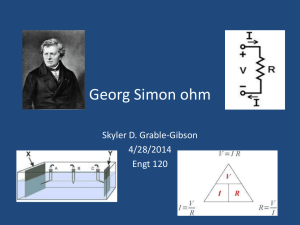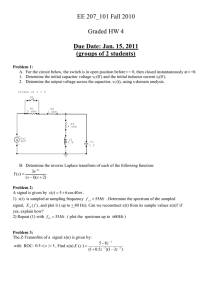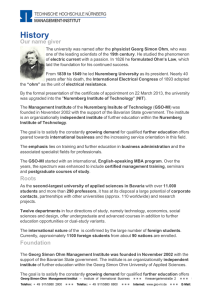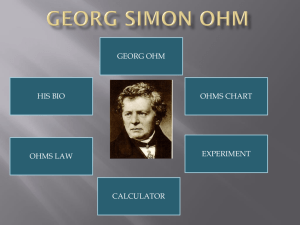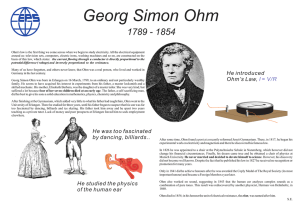Georg Simon Ohm
advertisement
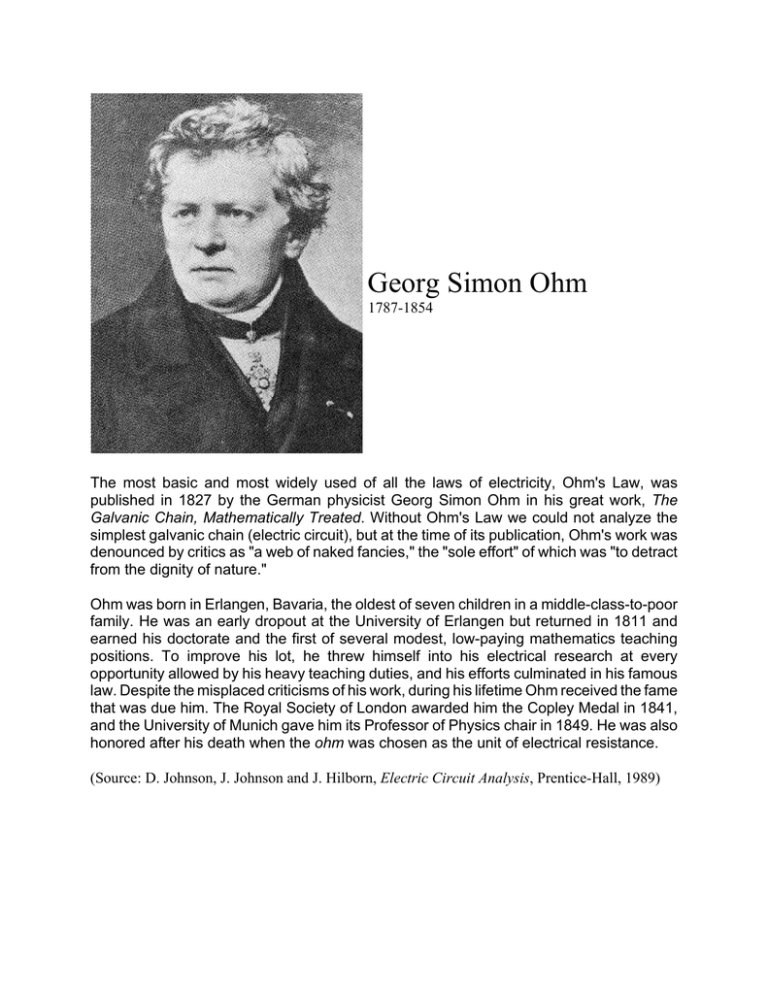
Georg Simon Ohm 1787-1854 The most basic and most widely used of all the laws of electricity, Ohm's Law, was published in 1827 by the German physicist Georg Simon Ohm in his great work, The Galvanic Chain, Mathematically Treated. Without Ohm's Law we could not analyze the simplest galvanic chain (electric circuit), but at the time of its publication, Ohm's work was denounced by critics as "a web of naked fancies," the "sole effort" of which was "to detract from the dignity of nature." Ohm was born in Erlangen, Bavaria, the oldest of seven children in a middle-class-to-poor family. He was an early dropout at the University of Erlangen but returned in 1811 and earned his doctorate and the first of several modest, low-paying mathematics teaching positions. To improve his lot, he threw himself into his electrical research at every opportunity allowed by his heavy teaching duties, and his efforts culminated in his famous law. Despite the misplaced criticisms of his work, during his lifetime Ohm received the fame that was due him. The Royal Society of London awarded him the Copley Medal in 1841, and the University of Munich gave him its Professor of Physics chair in 1849. He was also honored after his death when the ohm was chosen as the unit of electrical resistance. (Source: D. Johnson, J. Johnson and J. Hilborn, Electric Circuit Analysis, Prentice-Hall, 1989)


